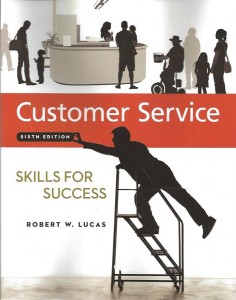Three Proven Strategies that Build Customer Loyalty
Most organizations struggle to find ways in which they can build customer loyalty and reduce customer churn. Many of these companies spend large amounts of money and time creating costly reward programs, sending out expensive marketing materials, and investing in expensive customer relationship management systems. While each of these components has value and contribute to customer satisfaction; the following are three proven strategies that build customer loyalty can be used by customer service representatives.
1. Become a trusted customer resource. Customers often encounter life challenges that require expertise beyond their capabilities. For example, an electrical light switch stops working, a toilet starts leaning, their computer starts giving error messages, or they start experiencing problems with their car. In each of these instances, people will often turn to a reputable source for assistance to help resolve the issue. If you are that source, take the time to listen empathetically and then demonstrate that you have the knowledge and expertise to assist them. By effectively and efficiently helping navigate the problem and coming to a speedy and cost-effective resolution, you can show value for the products and services that you and your organization provide. You can also increase customer satisfaction and help ensure that they will return to you again in the future.
2. Demonstrate integrity. In a world where stories of unethical or illegal behavior from businesses and service providers are commonplace, you have an opportunity to excel in demonstrating your own integrity. You can do so by:
- Keeping your word and meeting agreed to timeframes and commitments.
- Being honest.
- Being consistent and reliable in your service delivery.
- Providing quality products competitive warranties and guarantees.
3. Address service breakdowns professionally.
Things do not always go the way you plan. An unexpected delay may necessitate a schedule modification or a product may fail to perform as expected or promised. When such glitches occur, take the opportunity to listen to your customer and immediately take the appropriate action(s) to address the situation. Work professionally to identify the issue and cause, and then negotiate an acceptable remedy. By showing that you are committed to resolving the issue to the customer’s satisfaction in a timely manner, you can retain their trust and confidence that you are working in their best interest.
By taking these three simple steps as a customer service representative, you can assure your customers that you are interested in meeting their needs, wants and expectations. You also show that you will put forth the effort to ensure that they are satisfied.
What are other customer loyalty strategies that you use, or have experienced, related to building customer loyalty?
In addition to the three proven strategies that build customer loyalty listed above, you can find many additional ideas for building and maintaining strong customer relationships in these resources – Customer Service Skills for Success, Please Every Customer: Delivering Stellar Customer Service Across Cultures and How to Be a Great Call Center Representative.


 At one point in history, business owners knew their customers personally. They knew their customers’ families, what their religious affiliation was, and what was happening in their lives. Customers dealt with the owners of a business and had personal relationships with them. That was then, and this is now. That is why many customer relationship management initiatives focus on customer loyalty and retention.
At one point in history, business owners knew their customers personally. They knew their customers’ families, what their religious affiliation was, and what was happening in their lives. Customers dealt with the owners of a business and had personal relationships with them. That was then, and this is now. That is why many customer relationship management initiatives focus on customer loyalty and retention.




